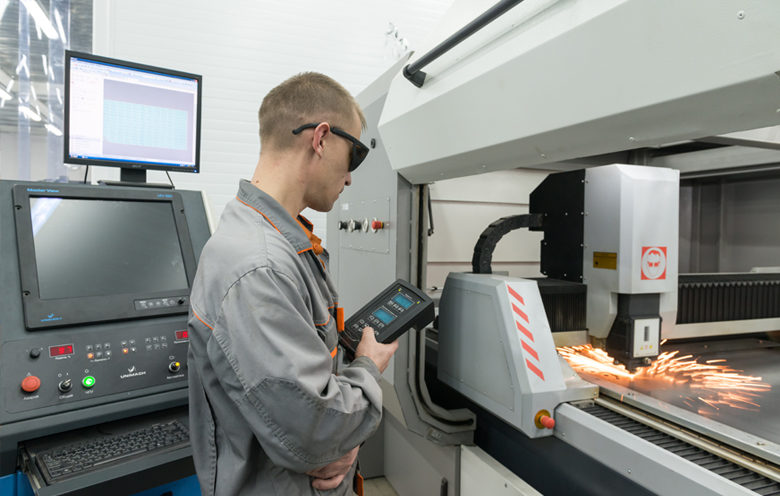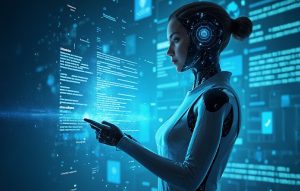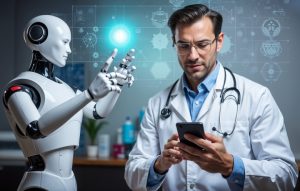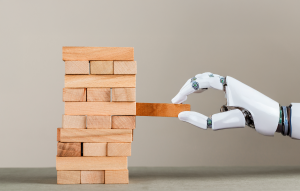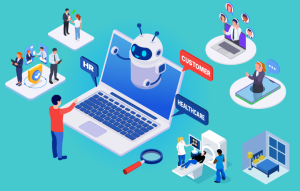The role of manufacturing in advanced and developing economies has shifted dramatically. It has become critical to revolutionize the manufacturing industry to keep up with the ever-changing economy. And in that stead, we are witnessing the most disruptive social-economic transformation in the form of the Fourth Industrial Revolution. While AI is transforming several industries, manufacturing isn’t left untouched by the technology.
The artificial intelligence in manufacturing market is estimated to be valued at USD 1.0 billion in 2018 and is expected to reach USD 17.2 billion by 2025, at a CAGR of 49.5% from 2018 to 2025. – Marketsandmarkets
Increasingly large and complex data sets available in the form of big data and evolving industrial IoT and automation drive the growth of this market. Improved computing power and declining costs of hardware are other key factors driving the adoption of AI in the manufacturing industry.
Enhancing engineering
Automated predictive maintenance
AI-driven predictive maintenance goes beyond historical analytics. It helps manufacturing companies to predict future scenarios, allowing them to assess a number of possible outcomes and decide an appropriate course of action. This entire process requires lesser human intervention compared to traditional maintenance processes. With techniques like business rules, machine learning, and computational modeling procedures, companies can autonomously monitor equipment data to get the full picture of equipment efficiency and health.
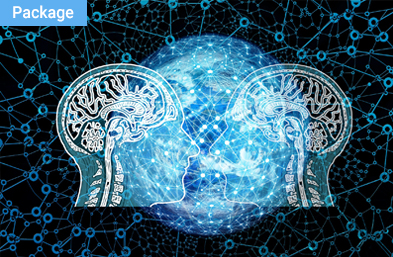
AI strategy and planning workshop
Artificial intelligence is transformational, and adopting this technology will enable companies to reshape their strategic vision so that they no longer rely on what they think is true, rather, leverage factual-based decision-making capabilities.
Fault notifications and maintenance reports are autonomously generated to enable the maintenance team to create, access or process work orders related to notifications in real-time. This improves the production efficiency. They can even predict the condition of a machine based on the defects it creates in its outputs. Here, the predictive directionality is reversed.
AI-powered predictive maintenance enables the engineering team to customize their maintenance activities to specific machines, or even for each specific component on a machine. This certainly is a noteworthy upgrade from the traditional method of basing maintenance on schedules or usage thresholds. This helps operators on the front line to understand their machines better than before.
With constant monitoring of essential production line equipment and the production status, data can be recorded and transmitted in real-time to the cloud for predictive maintenance analysis which results in increased productivity and reduced maintenance costs.
Generative designing
Artificial intelligence redefines the designing process by introducing generative designing to manufacturers. The working of generative design is based on design goals or parameters fed by the designers to the algorithm. This can be a onetime process where the system learns itself with each iteration and designs accordingly with near to zero human intervention. The AI system then explores all the possible permutations and quickly generates design alternatives.
AI helps to modernize manufacturing processes by enabling designers or engineers to select one design that meets their goals and criteria. Manufacturers will be able to create complex designs that are difficult and time-consuming if done manually. The feeding back of data essentially allows the product to co-design itself.
Generally, the generative design process begins by looking into historic data, finding similarities of that data with the data received from the ongoing design process, and analyzing what worked previously and what needs more development or enhancement. This helps the manufacturers to be better informed about the direction of the product. Moreover, conceptual level products can be generated efficiently with AI-powered generative design.
Automated defect detection
Image recognition helps manufacturers to streamline quality control processes. However, detection cameras are not merely sufficient as they spot only a number of flaws that are predefined by programmers. The AI-powered image recognition revolution is one step further.
Automating quality testing using machine learning is increasing defect detection rates up to 90%. – Forbes
The AI system is trained to detect defects on diverse surfaces by pre-fed data and real-time inputs provided by the production process. This enables the system to identify and categorize defects successfully. This also helps the system differentiate the readings triggered by dust or dirt allowing them to not be considered as a flaw or defect.
Manufacturers can harness the power of artificial intelligence for necessary quality checks and ensure delivery of products with utmost quality. This eliminates the need of numerous tests required to assure the desired quality. The system can analyze the data from manufacturing operations as well as existing test data and results and use AI-driven automated testing to cut down on test times.
This allows manufacturing companies to continually predict the quality of the end-product before the final testing. After each manufacturing process, the predictions about final characteristics of a product can be updated for early corrective measures to increase the efficiency of the production line.
Process optimization
Automating manufacturing operations
Automating manufacturing operations
Manufacturers need to embrace robotics in greater volume to increase efficiency and work rates on production and packing lines as they are attaining greater degree of capabilities. Robotics, fueled by AI, help in the evolution of the manufacturing floor and reduce costs related to labor.
AI can automate several routine and administrative tasks for industrial manufacturing. This would provide the following benefits to the manufacturers:
- Achieve workflow efficiency
- Place re-orders
- Trigger reactions to faults
- Flag potential hazards
- Reroute materials
These advantages of AI-driven automation aid towards huge improvements in uses of time and resources. AI integration with robotics allows robots to monitor their own accuracy and performance. Furthermore, this can automate the maintenance process and help manufacturers to avoid expensive downtime. Moreover, robots can be programmed to perform multiple tasks at once and can collaborate easily with their human counterpart to successfully perform a task with a high degree of repeatability.
Automated inventory monitoring
How fascinating it is to use AI to eliminate manual inventory checking! AI gives an opportunity to manufacturing companies to autonomously keep a track of total purchase orders and ensures inventory optimization. Moreover, AI systems are capable of sending out repurchase order in real-time when there is an inventory drop. This eliminates any chance of manual error that occurs while checking bulk data as AI provides more accurate results.
Meeting customer demands
The pain area for manufacturers in terms of inventory management has always been the dilemma of overstocking inventory vs not having enough inventories when the demand rises. Another challenge that they face is the inability to track important items. This is where automated inventory management helps in providing real-time monitoring and optimization of assets. Artificial intelligence helps manufacturing companies with better supply and demand planning. The primary goal of an AI-powered inventory optimization system is to provide customers with the correct product, at the correct location, at the correct time with automated inventory management.
This intelligent inventory optimization solution automatically adjusts inventory levels to precisely meet the changing customer demands. This results in improving service levels, decreasing costs, and increasing inventory turnover.
Achieving industrial efficiency
There are already a number of machines that are powered by AI and are capable of autonomously improving the efficiency of manufacturing processes. AI apps for manufacturing help them monitor quantities of material used, temperatures, lead times, errors, and downtime autonomously.
AI is definitely a boon for the manufacturing industry
Artificial intelligence helps manufacturers with real-time problem-solving. AI-enabled manufacturing will see higher production and high efficacy in overall operations.
Interested in learning more? Contact our AI experts. They will guide you further on how these technologies can give your manufacturing operations a boost.


